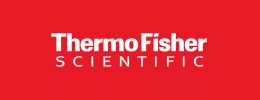
分析测试百科网 认证会员,请放心拨打!
使用的高分辨率三重四极杆质谱仪定量分析复杂混合物中靶向肽的新方法
| 方案文件名 | 下载 |
|---|---|
使用的高分辨率三重四极杆质谱仪定量分析复杂混合物中靶向肽的新方法 |
下载此篇方案 |
前言:
A common endpoint for a biomarker discovery experiment is a list of putative marker proteins. A reasonable next step is to then perform targeted quantitative measurements of these proteins in an expanded patient population to assess their validity as markers. Analytical accuracy and precision are required for the unambiguous quantitative analysis of targeted proteins from very complex mixtures. Wide dynamic range, high sensitivity, and robustness are critical for high throughput detection of low abundance proteins. A selected reaction monitoring (SRM) workflow, based on tandem mass spectrometry, allows highly sensitive and selective quantitation of unique peptides from proteins of interest in complex biological matrices and is indispensable for biomarker validation.1-4 The major advantage of this approach is a low detection limit, i.e. the ability to measure low levels of peptides in complex mixtures with high chemical background, while maintaining excellent quantitative accuracy and precision.
As there are no available standards for most proteins of interest, it is necessary to confirm the identity of observed peaks in SRM experiments for protein quantitation. Traditionally, an SRM-triggered full scan MS/MS was used to confirm the identity of a targeted peptide5 via database search. An additional benefit of acquiring a full scan MS/MS spectrum is to enable method refinement for the selection of precursor-product transitions to ensure maximum sensitivity. However, the quality of the MS/MS scan is compromised when peptide peaks co-elute with isobaric chemical interferences from background ions.Such an approach also suffers from worse detection limits compared to those observed for an SRM experiment. In addition, the long cycle time limits the utility of the approach for simultaneous peptide identity confirmation and quantitation in a single LC run.
An alternative approach to confirm the identity of a targeted peptide is to increase the number of monitored b- or y-type ions from each peptide.6 This approach produces the best results with regard to sensitivity, duty cycle, and selectivity by using a triple quadrupole mass spectrometer in SRM mode while providing high confidence confirmation of the identity of targeted peptides by enabling tag searching.
仪器:
Thermo Scientific TSQ Quantum mass spectrometer
结论:
A new approach using the H-SRM assay on a TSQ Quantum Ultra triple quadrupole mass spectrometer for simultaneous qualitative and quantitative targeted protein analysis was evaluated. This approach gave excellent sensitivity, analytical assay precision and quantitative accuracy for targeted protein quantitation in whole human serum by dramatically reducing non-specific interference from serum background ions. The H-SRM assay greatly improves assay specificity and detection limits thereby offering significant advantages for biomarker verification and validation studies.
1. The proposed H-SRM assay for peptide detection and confirmation with time alignment of multiple fragment ions from each peptide had lower detection limits than the traditional approach for peptide detection and identification using SRM-triggered MS/MS data acquisition and provided wider quantitative dynamic range. All 50 targeted peptides were identified using the H-SRM methodology. Traditional approaches identified only 36 peptides (QED-MS/MS on TSQ Quantum Ultra) and 32 peptides (EPI MS/MS on 4000 Q TRAP). The new approach also allowed for efficient simultaneous targeted peptide peak identification and quantitation in a single LC run.
2. The H-SRM assay provided significant improvement of S/N ratios resulting in unambiguous detection of targeted peptides. Excellent analytical precision was obtained for all selected dwell times (5 ms, 10 ms, and 20 ms) on the TSQ Quantum Ultra. Approximately 95% of the peptides gave CVs <15% for all three dwell times. No significant signal loss was observed when using shorter dwell times.
3. The H-SRM assay provided the widest dynamic range for targeted peptide quantitation. The dynamic range for detecting proteins in this study was over four orders of magnitude.
4. The quantitative accuracy of the H-SRM assay was excellent. The average relative quantitation error was ±4%.
5. Aided by higher resolution precursor ion isolation and faster cycle time, the TSQ Quantum Ultra provided high quality SRM-triggered QED-MS/MS data and identified more targeted peptides by a Mascot search compared with the 4000 Q TRAP.
6. Monitoring multiple y-type product ions (four or more) provided the most selective and sensitive means of further method refinement to determine proteotypic peptides and corresponding transitions including fragment ion ratios, which could subsequently be used for validated methods.




